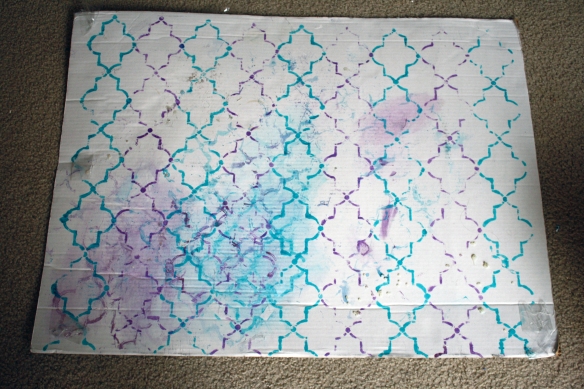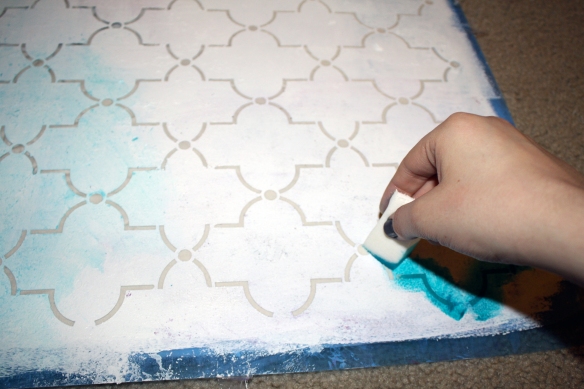After going to the Creative-U event this past Saturday I was dying to paint something myself. (More on the fabric dyeing event here.)
Because I am on a budget I decided to use a stencil, fabric, and spray adhesive that I already had. I also took Chris’s advice and used cosmetic sponges instead of a paint brush.
The stencil I used is this Moroccan pattern that I purchased at Hobby Lobby this summer for another project. Unfortunately Seattle doesn’t have a Hobby Lobby but you can buy it online here.
I went to Artist & Craftsman, a craft store in the U-district to buy the fabric paint. They had a pretty good selection and I settled on these two colors.
I then tested out different pattern ideas on some scraps of my fabric before I settled on the simplest design (on the right).
This big ugly piece of cardboard is probably one of my best DIY tricks. Because I live in an apartment and have no access to outdoor areas to paint, it’s really useful to have a big surface to paint on.
That way, when you’re fabric inevitably bleeds, it’s your cardboard and not your fabric that looks like this.
Two things were really key with this project. The first was using a spray adhesive to keep your stencil in place. You can really tell where I was diligent with it and where I wasn’t. The second thing was using the cosmetic sponge. They were super inexpensive and allowed you to dab on the paint without having too much excess.
Once I finished, I left the fabric to dry for 24-hours. Then it was time to iron the fabric to set the dye.
There are some problem areas when you look closely. (This is why the adhesive is so important.)
But overall, I’m really happy with how it turned out.
As far as budget, I spent $10 on the fabric paint and $3 on the sponges but I hardly made a dent in either of them.
I have big plans for this fabric. Tune in next week to see what I do with it.
Have you painted fabric? How did it turn out? Let me know in the comments below.
















